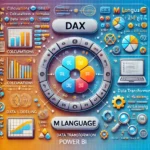SPSS vs. SQL: Choosing the Right Data Analysis Approach
In the ever-evolving world of data analysis, making the right choice between different tools and techniques is crucial. When it comes to managing and analyzing data, two prominent options often come to mind: SPSS (Statistical Package for the Social Sciences) and SQL (Structured Query Language). In this blog post, we will explore the strengths, use cases, and differences between SPSS and SQL to help you make an informed decision.
Understanding SPSS:
SPSS, developed by IBM, is a statistical software package widely used for data analysis in various fields, including social sciences, market research, and healthcare. It offers a comprehensive range of statistical tools and techniques for in-depth analysis.
Key Features of SPSS:
- Statistical Analysis: SPSS provides an extensive set of statistical tests and procedures, making it ideal for advanced data analysis.
- Data Visualization: While it offers basic data visualization capabilities, SPSS primarily focuses on statistical outputs.
- Data Preparation: SPSS includes features for data cleaning, transformation, and management.
- Advanced Analytics: It supports complex statistical modeling, regression analysis, and factor analysis.
- Reporting: SPSS generates detailed reports, tables, and charts for presenting analysis results.
Exploring SQL:
SQL (Structured Query Language), on the other hand, is a domain-specific language used for managing and querying relational databases. SQL is the backbone of many database systems, including MySQL, PostgreSQL, and Microsoft SQL Server.
Key Features of SQL:
- Data Retrieval: SQL is primarily used for querying and retrieving data from databases. It allows users to specify what data they want to retrieve and how it should be filtered and sorted.
- Data Modification: SQL can be used to insert, update, and delete data in a database, making it essential for database management.
- Data Transformation: While SQL’s primary focus is on data retrieval and modification, it can be used to transform data through complex queries.
- Data Aggregation: SQL supports various aggregate functions, such as SUM, AVG, and COUNT, making it suitable for summarizing data.
- Data Joins: SQL enables the merging of data from multiple tables using JOIN operations.
https://synapsefabric.com/2023/09/01/spss-vs-tableau-unveiling-the-data-analysis-duel/
SPSS vs. SQL: A Comprehensive Comparison
Let’s compare SPSS and SQL across various dimensions to better understand their differences and use cases:
| Aspect | SPSS | SQL |
|---|---|---|
| Primary Use Case | Advanced statistical analysis and research. | Data retrieval, manipulation, and management in relational databases. |
| Data Visualization | Focuses on generating detailed statistical outputs. | Primarily used for data retrieval and manipulation; limited data visualization capabilities. |
| Data Preparation | Robust data cleaning, transformation, and management features. | Lacks specialized data preparation features; primarily for querying and modifying data. |
| Advanced Analytics | Strong support for complex statistical analysis. | Limited support for advanced analytics; focused on data retrieval and modification. |
| Learning Curve | Steeper learning curve due to complex statistical concepts. | Moderate learning curve; syntax-based language for querying databases. |
| Automation | Supports automation through syntax scripting. | Automation through scripting, but mainly for database operations. |
| Data Source | Suitable for structured datasets, common in research and surveys. | Designed for relational databases with structured data. |
| Collaboration | Limited collaboration features. | Collaboration through database access control and sharing query scripts. |
Making the Right Decision:
The choice between SPSS and SQL depends on your specific data analysis needs and the nature of your data. If you require advanced statistical analysis, especially in research or scientific fields, SPSS is the preferred choice. Conversely, if you need to manage, retrieve, and manipulate data in relational databases, SQL is the go-to tool.
In some cases, these tools can complement each other. You might use SQL to extract and transform data from a database and then import it into SPSS for advanced statistical analysis.
Ultimately, your decision should align with your objectives, your data’s structure, and your familiarity with the tools. Both SPSS and SQL offer unique strengths, and understanding these differences is essential for effective data analysis and management. Whether you’re a data scientist exploring complex statistical relationships or a database administrator handling vast datasets, the choice between SPSS and SQL ultimately depends on your unique needs and goals.






